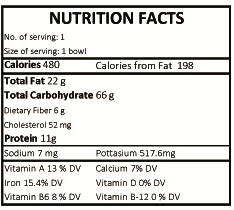Celiac Disease – an autoimmune condition that affects nearly 1% of our total population is somewhat unique in the sense that if has an effective treatment in the Gluten Free diet. However, this diet can be difficult to follow and a significant number of celiac do not respond well to the diet due to accidental exposure to gluten. Gluten is traditionally found in wheat, rye, triticale, barley (sometimes oats and sometimes not). Why this confusion?? What this controversy over oats is all about?? What should you do on gluten free diet- eat oats or omit them???
The inclusion of oats in a gluten-free diet has been a controversial issue with one group pointing towards research that suggests that oats contain Avenin - a protein that closely resembles wheat gluten and may cause inflammation in susceptible individuals. Hence, unsuitable on a gluten -free diet.
Whereas the other group points towards research that suggests that none of the peptides that cause reactions in people with gluten intolerance are present in oats. Hence, safe on a Gluten –Free Diet.
Some research shows that most of the celiac can well tolerate oats and the adverse reactions are only due to the cross-contamination of oats with other gluten containing grains like wheat and the conditions in which they are grown, harvested, transported, packed and stored.
In addition to all these controversies on a personal note, my experiences with a sizeable number of celiac reveal that there are a large number of celiac who do not report of adverse reactions when they consume oats at the same time almost an equal percentage of celiac complain of bloating and other symptoms associated with gluten intolerance.
The controversy over oats has not yet been resolved and what actually triggers the reaction – avenin or gluten cross contamination is not yet clear. A large-scale study is needed to produce valid results. However, unfortunately, no such research has been conducted till date.
Until this controversy is resolved excluding oats appears to be the only risk-free option for those on a gluten-free diet. However, if you wish to try oats you can do so by adhering to the medically approved guidelines for celiac.
People who are merely gluten sensitive may be able to well tolerate oats without any adverse effects. But as the level of gluten intolerance varies you must not consider this as a specific recommendation. Some people may tolerate it well while others may have reactions to even a small amount of it. To determine your level of tolerance, consume only small amounts of oats, in the beginning, to see how your body reacts to it. If no reaction you can slowly increase its quantity.
But before consuming oats remember, unless manufactured in a dedicated facility oats can also be cross-contaminated with gluten. So always buy oats that are manufactured in a dedicated facility and are labelled gluten free.






